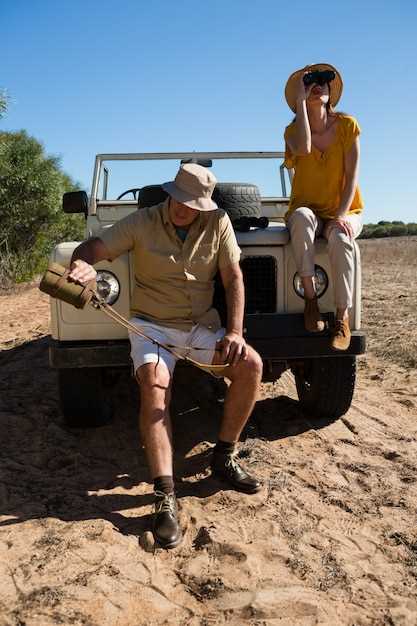
Overlanding is not just a method of travel; it is an adventure that allows you to explore the great outdoors with freedom and flexibility. When equipped properly, your Jeep can become the ultimate vehicle for overlanding, taking you to remote destinations and rugged landscapes that many can only dream of. This article aims to guide you through the essential modifications and upgrades necessary to transform your Jeep into a truly capable overlanding powerhouse.
At its core, overlanding is about self-reliance and exploration. It challenges you to navigate through diverse terrains and climates while carrying all the essentials for both comfort and survival. By making strategic enhancements to your Jeep, you can ensure that your adventure is not just attainable but also enjoyable and safe. From suspension upgrades to storage solutions, every aspect of your vehicle can be tailored to improve your overlanding experience.
Whether you are a seasoned adventurer or new to the world of off-road exploration, preparing your Jeep for overlanding is crucial. This guide will provide you with insights into optimizing every element of your setup, allowing you to embrace the spirit of adventure with confidence. Let’s dive in and discover how to elevate your Jeep for the ultimate overlanding experience.
Choosing the Right Suspension Upgrades for Off-Road Performance
Transforming your Jeep into an overlanding powerhouse begins with the right suspension upgrades. A well-thought-out suspension system can significantly enhance your vehicle’s off-road capabilities, ensuring stability and comfort during your adventures.
Lift Kits are among the most popular upgrades for off-roading enthusiasts. A lift kit raises the height of your Jeep, allowing for greater ground clearance. This is crucial for navigating rocky terrain and deep water crossings. Choose a lift kit that balances height with stability to avoid compromising your vehicle’s handling.
Shock Absorbers play a vital role in managing vibrations and impacts. Upgrading to high-performance shocks designed for off-road use will improve your Jeep’s ability to absorb bumps and maintain traction. Look for adjustable options that allow you to tailor the damping settings for different terrains.
Spring Upgrades are another essential consideration. Heavy-duty coil springs or leaf springs can enhance load capacity and provide better articulation. When selecting springs, factor in the weight of your gear and modifications as this will influence your suspension’s performance during adventures.
Control Arms are key to maintaining proper alignment and handling when your Jeep is lifted. Invest in stronger, adjustable control arms that can withstand the rigors of off-roading. This upgrade will help improve your Jeep’s suspension geometry, enhancing stability on uneven surfaces.
Air Suspension Systems offer versatility by allowing you to adjust ride height and firmness on the fly. This is particularly beneficial for overlanding, where different terrains require varying vehicle setups. An air suspension can adapt your build for both comfort on highways and ruggedness on trails.
In conclusion, selecting the right suspension upgrades for your Jeep is integral to enhancing its off-road performance. Consider your specific adventure needs, the terrains you’ll encounter, and the overall build of your vehicle. With the right components, your Jeep will be ready to face any challenge that comes its way.
Essential Gear and Accessories for a Complete Overlanding Setup

To transform your Jeep into an overlanding powerhouse and embark on unforgettable adventures, equipping it with the right gear and accessories is crucial. A well-prepared vehicle can enhance comfort, safety, and functionality while traversing diverse terrains.
1. Roof Rack System: A sturdy roof rack is indispensable for maximizing storage capacity. It provides a platform to carry essential items such as extra fuel cans, recovery boards, or even additional camping gear. Ensure your rack is compatible with Jeep models and designed to withstand off-road conditions.
2. High-Quality Tent: A reliable overlanding tent offers a comfortable sleeping environment on the go. Consider a roof-top tent for easy setup and off-the-ground sleeping, or choose an adaptable ground tent for more space. Waterproof and durable materials are essential for protection against the elements.
3. Recovery Gear: When adventuring off the beaten path, the likelihood of encountering obstacles increases. Equip your Jeep with a winch, recovery straps, and shackles to safely recover your vehicle if it gets stuck. Don’t forget a shovel and traction pads, as they can significantly aid in challenging situations.
4. Portable Power Solutions: Overlanding often means venturing far from traditional power sources. A dual-battery system or solar panels can keep your devices and appliances charged. Invest in a high-capacity power bank or portable generator to ensure you’re never left without essential electrical power.
5. Cooking Equipment: Having a portable kitchen setup can greatly enhance your jeeping experience. A compact camping stove, a sturdy cookware set, and a cooler for perishables will allow you to prepare meals effortlessly at your campsite. Consider a foldable table for ease and comfort while cooking.
6. Navigation System: Reliable navigation tools are fundamental for any adventure. A GPS device specifically designed for off-road use or offline mapping applications on your smartphone can help you stay on track in remote areas. Always carry physical maps as a backup; technology can fail.
7. First Aid Kit: Safety should always be a priority. A comprehensive first aid kit, customized for your trip length and number of travelers, is essential in case of emergencies. Include items like bandages, antiseptics, and any necessary personal medications.
8. Lighting Solutions: Proper lighting ensures safety during nighttime setup or unforeseen situations. Invest in quality off-road LED lights for enhanced visibility while driving and portable lanterns to illuminate your campsite.
In conclusion, choosing the right gear and accessories will significantly enhance your overlanding adventure in your Jeep. Prioritize functionality, safety, and comfort to create the ideal setup for exploring the great outdoors.
Route Planning and Navigation Tips for Overlanding Adventures

Transforming your Jeep into an overlanding powerhouse requires careful route planning and effective navigation strategies. Ensuring a successful adventure involves understanding the terrain, local regulations, and your own capabilities.
- Research Your Destination: Before setting out, familiarize yourself with the areas you intend to explore. Use resources like travel guides, online forums, and overlanding blogs to gather insights about popular routes and potential hazards.
- Utilize Navigation Tools: Equip your Jeep with reliable navigation tools. GPS devices and smartphone apps can offer real-time navigation capabilities, while offline maps are essential in areas with limited connectivity.
- Create a Plan: Outline your journey, including waypoints, rest stops, and fuel stations. Having a clear plan minimizes the risk of getting lost and ensures you stay on track during your adventure.
By integrating these tips into your preparation, you can enhance both the fun and safety of your overlanding journey.
Key Considerations for Route Planning
- Terrain Awareness: Assess the road conditions and the type of terrain your Jeep can handle. Consider factors such as elevation changes, obstacles, and ground conditions.
- Weather Forecast: Keep an eye on weather conditions that could impact your route. Bad weather can turn a manageable path into a challenging obstacle.
- Local Regulations: Check for any local regulations regarding off-roading and camping in the areas you’ll be visiting to avoid fines or legal issues.
Incorporating these elements into your preparations will help build confidence in your navigational skills and increase the overall enjoyment of your overlanding adventures in your Jeep.




